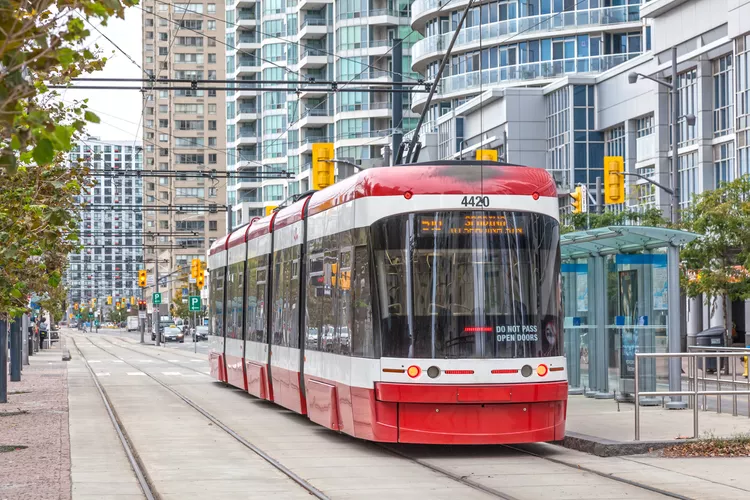Summary
Toronto’s Public Transportation System
The TTC is the main public transport provider in Toronto, running a subway system, streetcar lines, and bus routes across the city. Utilizing this system often involves transferring between vehicles to reach your destination, making it vital to understand the TTC’s transfer process for both residents and visitors.
Do You Always Need a TTC Transfer?
The paper transfers issued by the TTC are designed exclusively for passengers paying with cash, tickets, or tokens. If you’re utilizing a TTC Day Pass, a weekly pass, or a monthly Metropass, you can simply show your pass again when changing vehicles rather than needing a transfer. Moreover, a paper transfer is not necessary if you are using a PRESTO card. When you tap your PRESTO card on a card reader when boarding a vehicle, your transfer is recorded automatically.
Tip: A significant advantage of using any of the TTC’s passes or a PRESTO card is the freedom to hop on and off as needed, a benefit not available with a transfer.
Even when paying with cash, tickets, or tokens, a transfer is not always needed between TTC vehicles. At particular subway stations, connecting buses and streetcars can arrive in the fare-paid area. In these instances, drivers often assume that you’ve recently paid to enter the station or have just transferred from another vehicle. However, this policy is not consistent across all stations, so until you become familiar with your intended route, it’s generally safer to obtain a transfer.
PRESTO and Transfers
When using a PRESTO card on the TTC, passengers benefit from the convenient two-hour transfer. This feature, exclusive to PRESTO card users, allows for hopping on and off vehicles and switching directions within two hours of your initial tap.
The transfer is automatically linked to your PRESTO card upon your first boarding. Every time you tap, the reader checks the validity of your transfer within the two-hour timeframe. Once the two hours lapse, another fare is charged, and the two-hour clock resets. This flexibility is particularly advantageous for errands, as you have an extended duration to navigate the TTC without additional costs.
It’s worth noting that this two-hour transfer option does not apply when using cash, tickets, or tokens.
Getting a TTC Transfer
When boarding a vehicle, you must request a transfer from the driver after paying your fare. Most TTC bus and streetcar drivers will automatically provide a paper transfer for payments made with a ticket, token, or cash. If you’re not offered one, simply ask. Remember to obtain your transfer as you board the vehicle, not when exiting.
If your journey begins at a TTC station, a transfer doesn’t come from staff, but rather from an automated transfer machine. These machines, characterized by a small digital display showing the current time, can be found just inside station entrances. By pressing the button, you’ll receive a transfer with the current time stamped.
Using a TTC Transfer
A Trip-Based System: The majority of the TTC operates on a trip-based transfer system, meaning that a transfer is intended to facilitate a single continuous trip. For example, should your destination be northeast, you are expected to pay the fare to board a northbound route, obtain a transfer, disembark at a station where you can shift to an eastbound route, and then present your transfer to board the next eastbound vehicle.
Good for Any Number of Vehicles During That One Trip: You can utilize a transfer multiple times, provided the trip remains continuous. For instance, if you take a streetcar to a subway station and then transfer to a bus, you will show your initial transfer at both the subway collector booth and to the bus driver.
No Returning on the Same Route: A trip-based transfer cannot be used to reboard the same route where it was issued. Thus, you cannot alight and linger in an area before resuming your journey, regardless of whether you’re continuing in the same direction or returning. Even transferring to another route does not permit you to stop for shopping or any other activities prior to boarding your next vehicle.
Remember to Obtain Your Transfer When Paying Your Fare: Transfers are invalid for returning to board buses outside the station. You must acquire your transfer from the automated machine at the station where you board the subway, rather than where you exit.
Walking Transfers: In certain circumstances, two routes may run parallel but not connect at shared stops, potentially requiring a transfer between routes at designated walking transfer locations.
Transferring to Other Transit Systems
Even during a continuous journey, a TTC transfer cannot be used when boarding vehicles from other transit systems, such as Mississauga’s MiWay or York Region Transit (YRT). For travel into neighboring municipalities, be sure to verify the fare specifics for public transit options in the Greater Toronto Area (GTA).
If planning to utilize both GO Transit (Government of Ontario Transit) and the TTC, familiarize yourself with the fare arrangements for riders using both systems.





